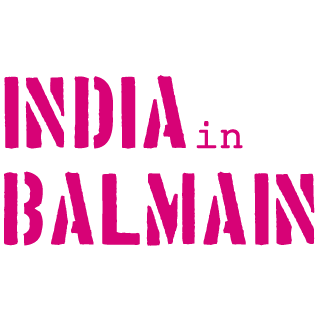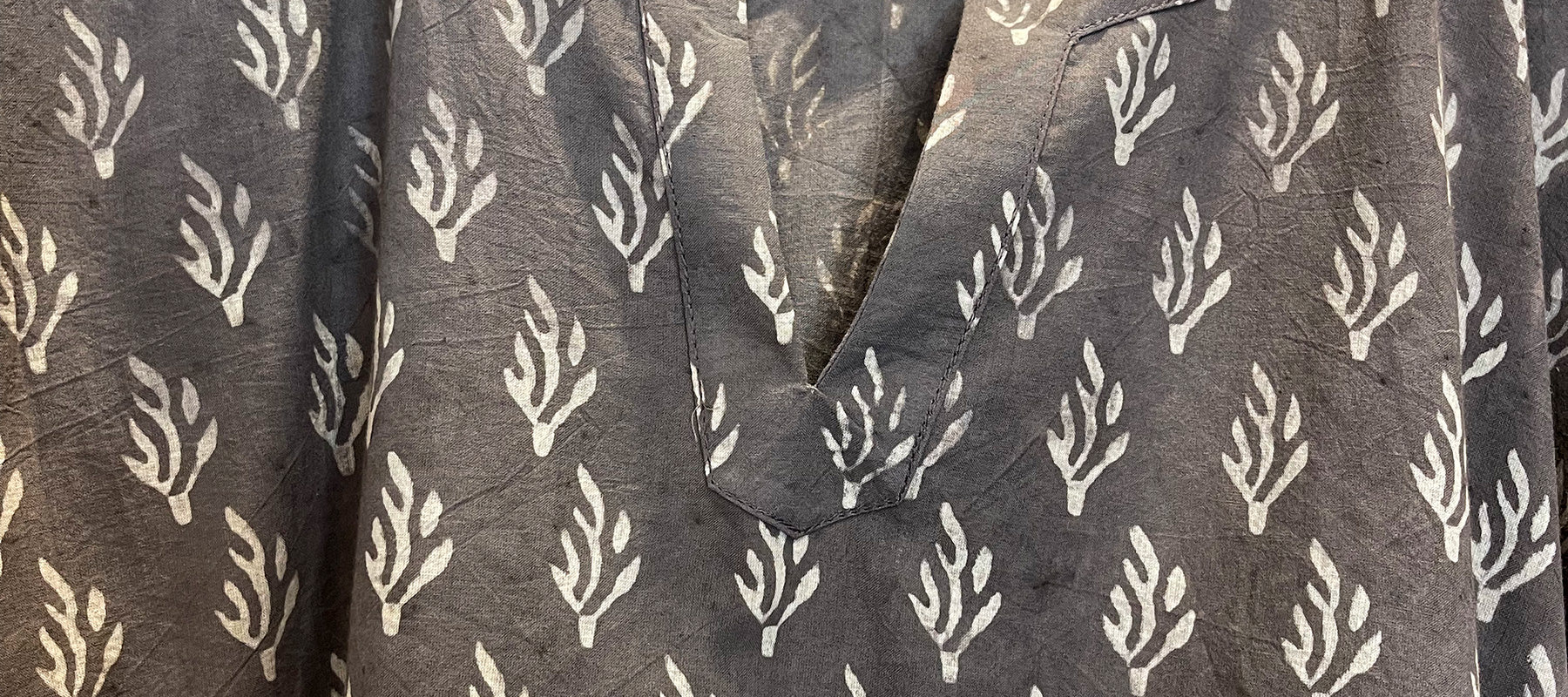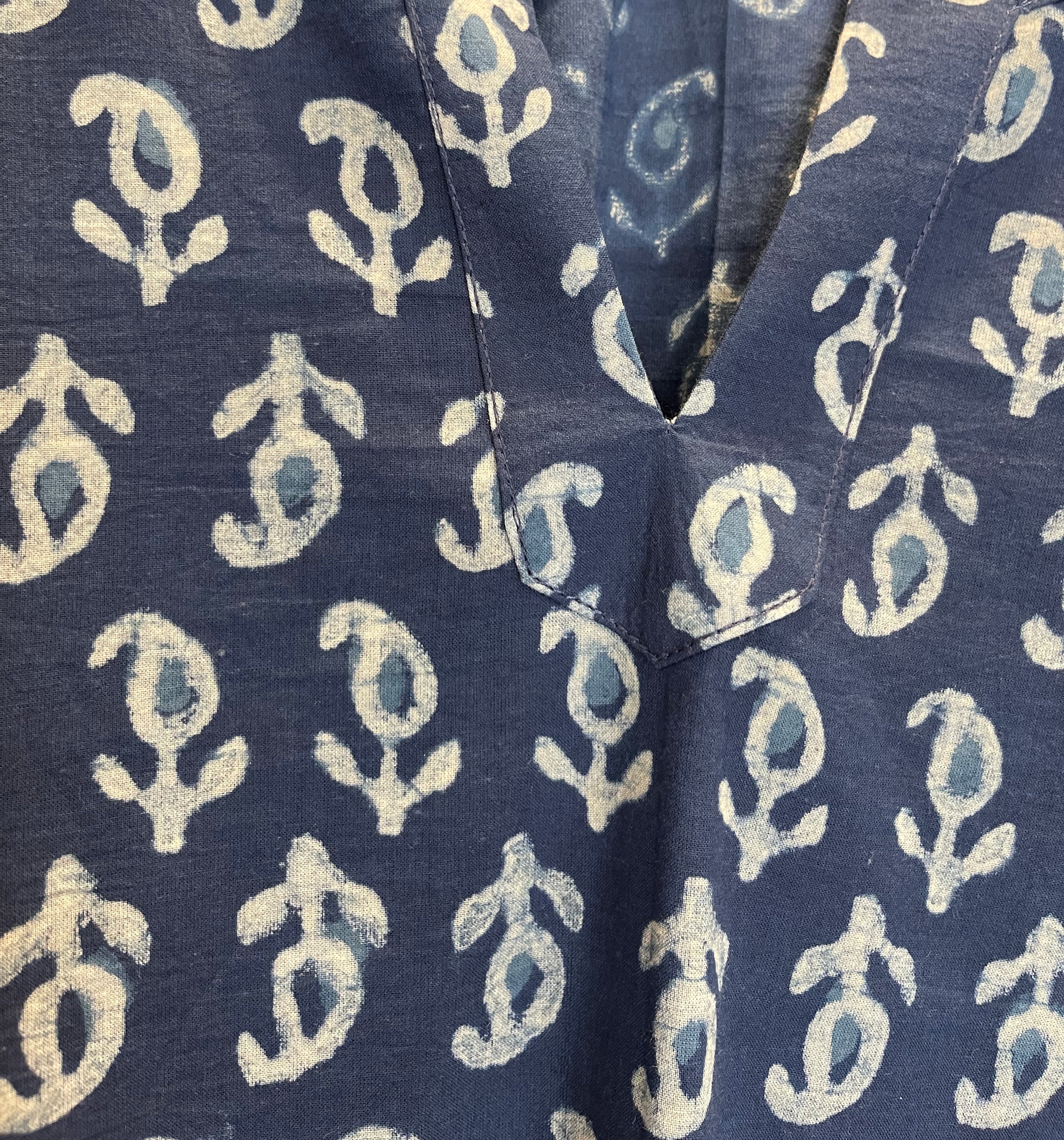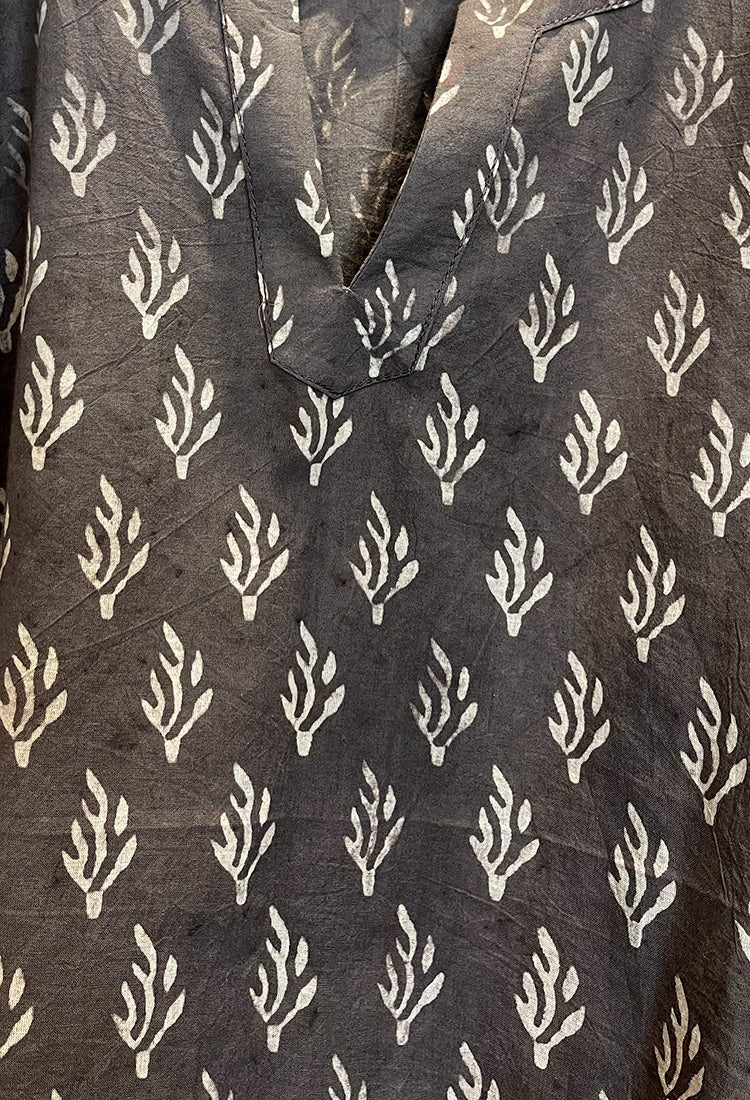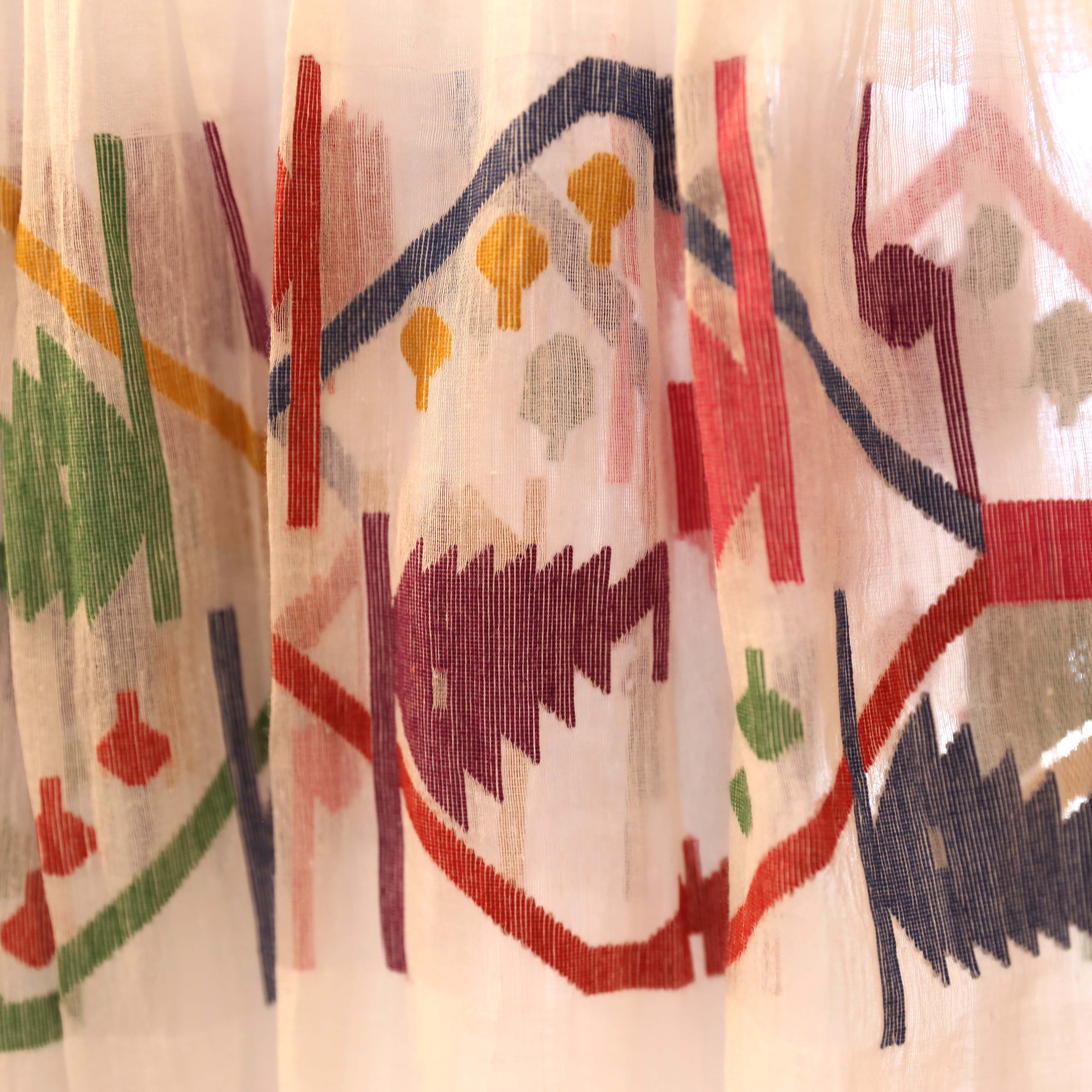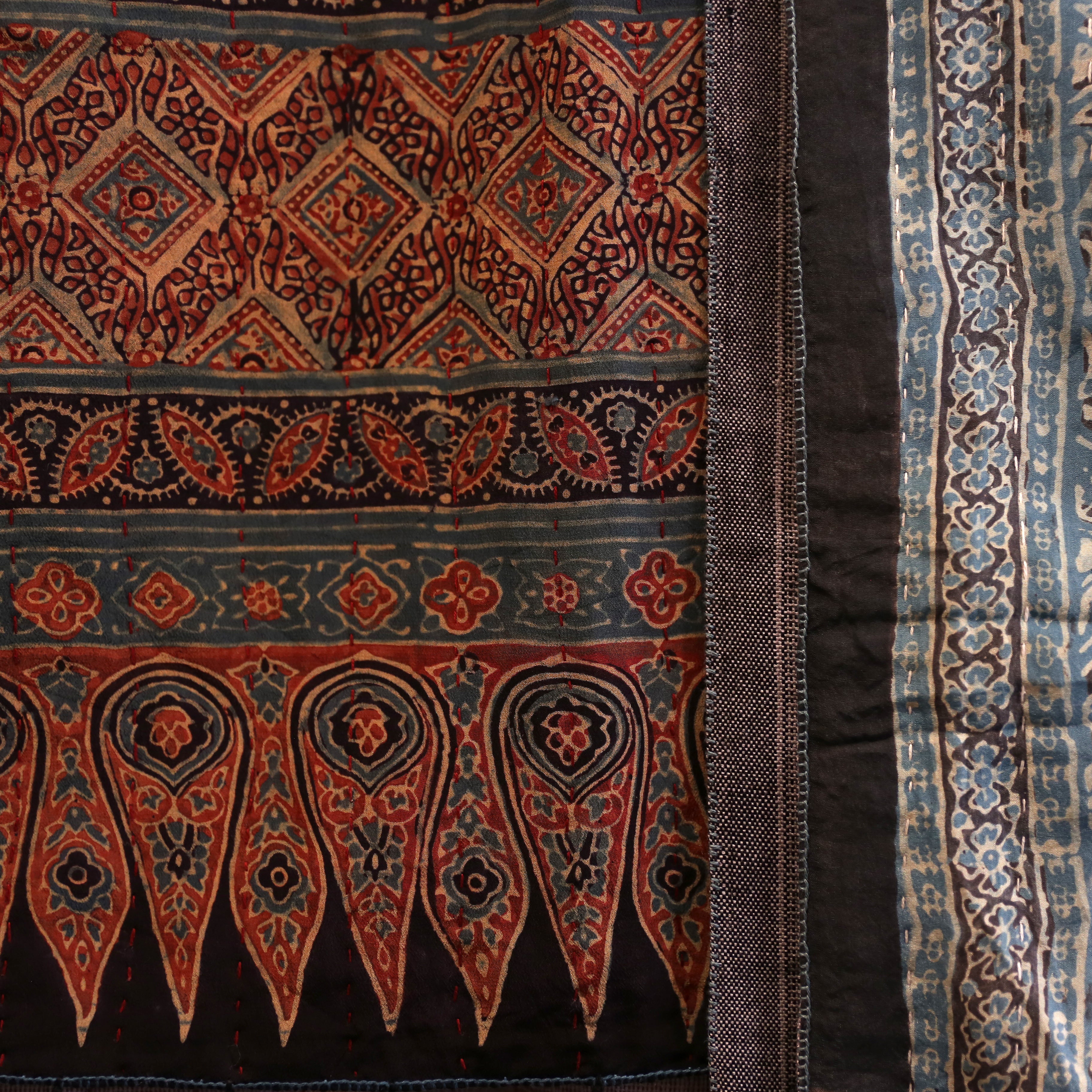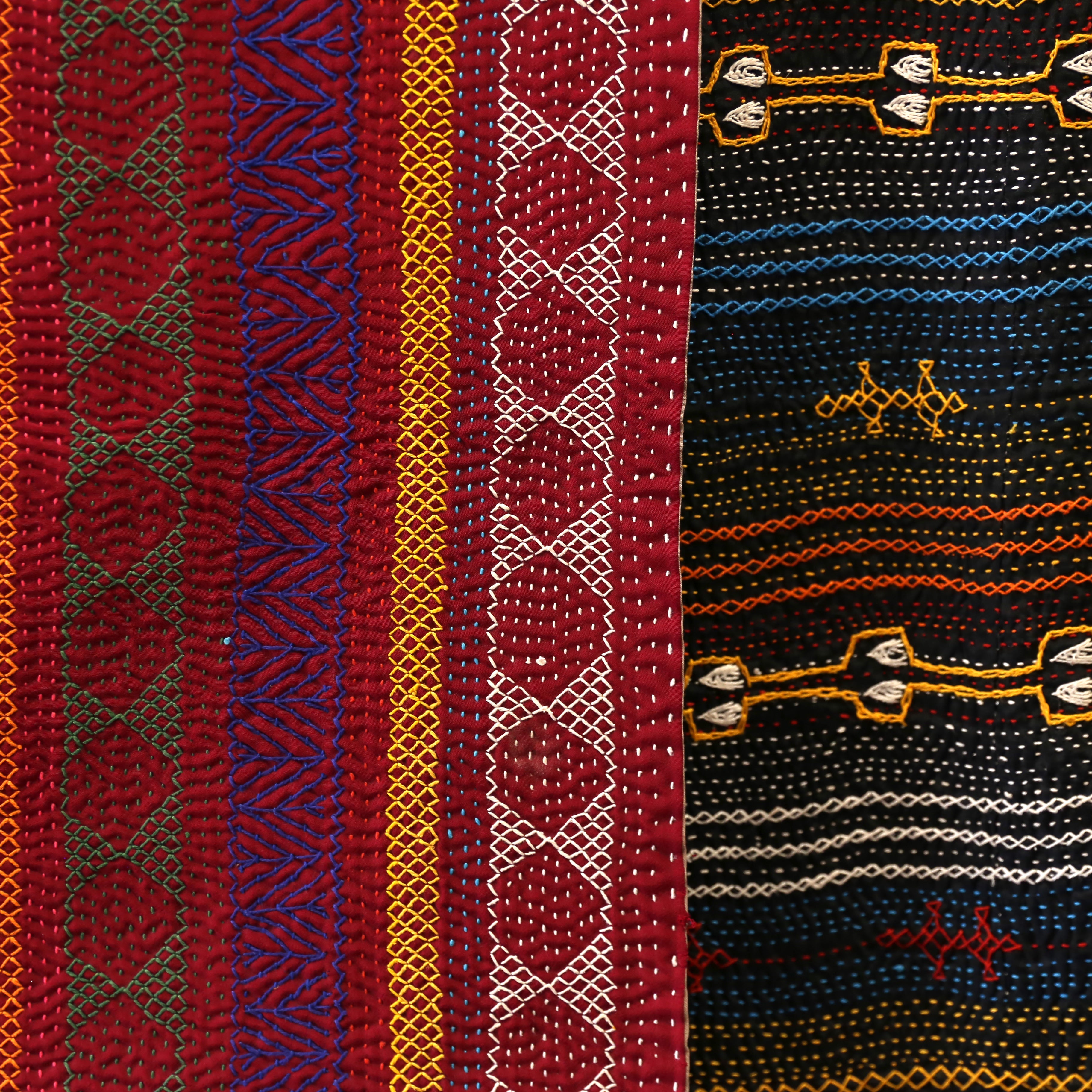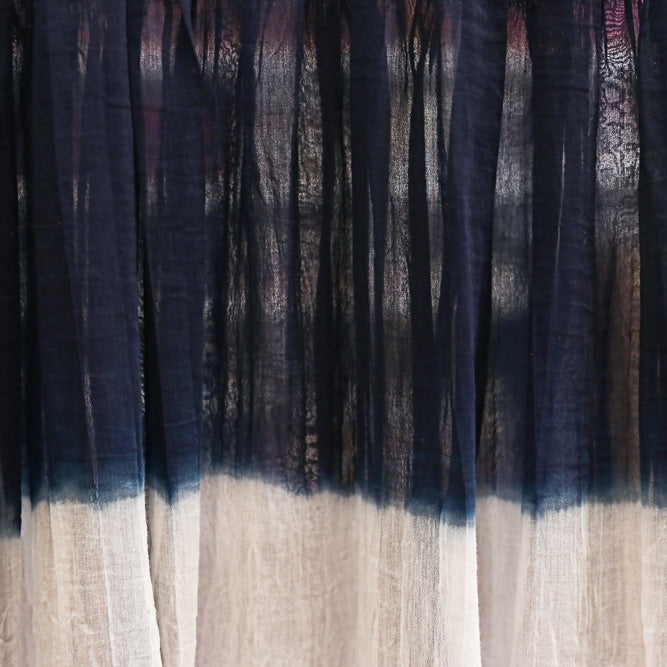Printed ⋮ Mud Resist or Dabu
Dabu printing is a mud resist printing process using a wooden block.
Dabu printing is a traditional art and an elaborate process in a unique way of dyeing and printing by which exceptional print fabrics of unique appeal result. This mud-resist hand-block printing is practiced mostly in certain pockets in the state of Rajasthan, India. Although all the motifs are derived from vegetable and floral forms, each bears a unique association with a specific community.
The dabu process begins with the collection and storage of mud from the local pond; prior to its usage the mud is wet and sieved until it becomes a fine paste.It is then mixed with lime, gum, either fenugreek or alum, and jaggery.
The fabric to be printed is washed thoroughly to remove all starch and then dried; the entire yardage is treated with harda, the mordant, and then dried again.
The resist printing is executed by applying a woodblock dipped in the dabu paste on the treated cloth.
To quickly dry the paste, saw dust is being applied to places where the mud resist is printed. The saw dust also acts as a binder which prevents colour penetration while dyeing. The application of mud resist onto the fabric is followed by dyeing the fabric in a cauldron of dye.
The process may be repeated for double dabu and triple dabu and hence forth. After every dyeing the fabric is thoroughly washed so as to remove the mud application. Finally the non dyed part where the resist has been applied is revealed after the washing. Some of the colour penetrates onto the fabric caused by mud cracking. The result is veining which gives a batik-like look to the fabric.
DABU PRINTS – AN ECO-FRIENDLY TRADITION
The highlight of Dabu printed fabrics is the use of organic colours and vegetable pastes which are eco-friendly, skin-friendly, fast, and retain their brilliance for most of the lifetime of the fabric. Dabu prints undergo a rigorous process that involves a lot of not so easily available and costly natural dyes and vegetable pastes.
MATERIALS
The following are used for making the print paste that goes into the magic of the Dabu prints.
Black clay from the nearby ponds. This is the main ingredient that goes into creating the resist effect in the Dabu process.
Bidhan or Wheat powder obtained from the wheat eaten by wheat insects. This improves the adhesion quality of the print paste to the block and fabric.
Gum Arabic that is fundamental to the print paste for adhesion to block and fabric.
Lime water that prevents the cracking of clay at the printed portion. It also improves adhesion of print to fabric.
Dye: Both natural and chemical indigos are used for dyeing in combination with some other natural dyes like dried pomegranate skin and alizarin.
